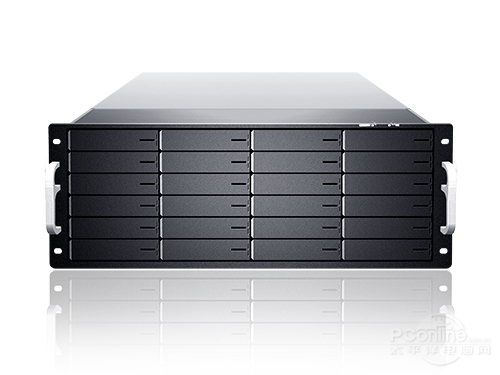For IT administrators, encountering RAID data disasters is always the biggest headache, because the related recovery technology involves too much knowledge, and ordinary administrators and even server vendors can not solve. Since the RAID data disaster should not be handled by the administrator, what should the administrator do at this time? We interviewed a senior data recovery engineer who will tell you how to ensure a high recovery success rate.

Do not force online: dangerous methods of operation
When a hard disk of the server fails, the general server will have an Offline indicator. At this time, the user is required to replace a good identical hard disk and re-verify the algorithm. It stands to reason that this is a very normal operation process, but it is not known that many RAID disasters are caused by this.
Take a RAID5 disk array with a large number of hard disks as an example. It is likely that several of the multiple hard disks purchased at the same time have become unstable. The server's Offline prompt may not be the most accurate, often false positives (also have hard drive instability) or miss other hard drives that also have hidden dangers. In the seemingly normal forced online process, the hard disk needs to perform a large number of read and write operations. This is a severe test: if you are lucky, it will naturally pass smoothly, and if you are not lucky, the other hard disks will suddenly drop. It makes the problem even more difficult.
Of course, there is a hard disk drop prompt, or a drop prompt within the RAID fault tolerance range, and the forced online operation is still necessary. However, before proceeding with this step, it is strongly recommended that you check the stability of each hard disk so that it is more secure. Don't ignore such a small detail, often this step can make the RAID server inevitably.
Protect the first scene: the safest thing to do nothing
For the manufacturer, all warranty commitments are limited to hardware devices, which means that the data crisis caused by the failure of the disk array has nothing to do with it. Responsible for replacing or repairing the user is considered “exhaustion”. But what users need is not to retrieve the hard drive or rebuild the RAID, but more valuable data. If you look for the whole machine manufacturer, this is tantamount to "satisfying yourself", because the so-called after-sales service does not start from the user's original source requirements, as soon as possible to ensure that the hardware equipment is intact and sacrifice data. Of course, server manufacturers or agents of well-known brands will take the initiative to choose to pay for the service data recovery of large customers' RAID data, but this is only a few cases.
According to the engineer in charge of the Data Recovery Center, the case of the complete destruction of the final data caused by the repair of the after-sales service engineers of the service provider occurred almost every week. After all, after-sales service engineers are mostly biased towards hardware, while RAID data recovery is based on software operations.
In addition, even simple verification operations may cause inconvenience to later data recovery. Take ordinary RAID5 recovery as an example. When the hard disk damage exceeds the fault tolerance, the image of the damaged hard disk must be completely extracted for final recovery. If the hard disk is frequently powered on, it is easy to cause further fatigue damage to the magnetic head and even scratch the disk. The correct approach should be to consult a professional data recovery service provider immediately.
Choose a professional data recovery service provider: don't get lost
According to the statistics of the Data Recovery Center, many cases of data recovery failures are due to users seeking an incorrect solution. The after-sales service that the server users rely on is often not professional enough. After the RAID disk array has problems, it is easy to choose to rebuild, and the data loss is even worse. When choosing a data recovery service provider, judging by scale and industry reputation is a feasible shortcut. In this respect, the service network has a deep accumulation of data recovery centers throughout the country, which can help users who encounter RAID data disasters to weather the storm in time.
